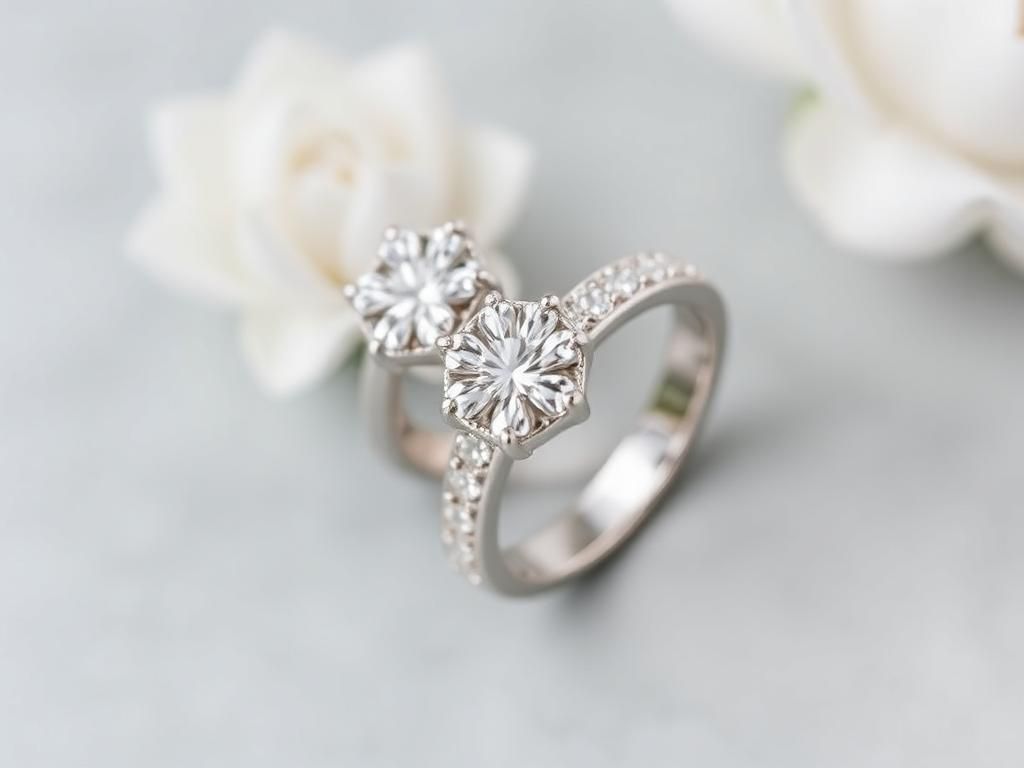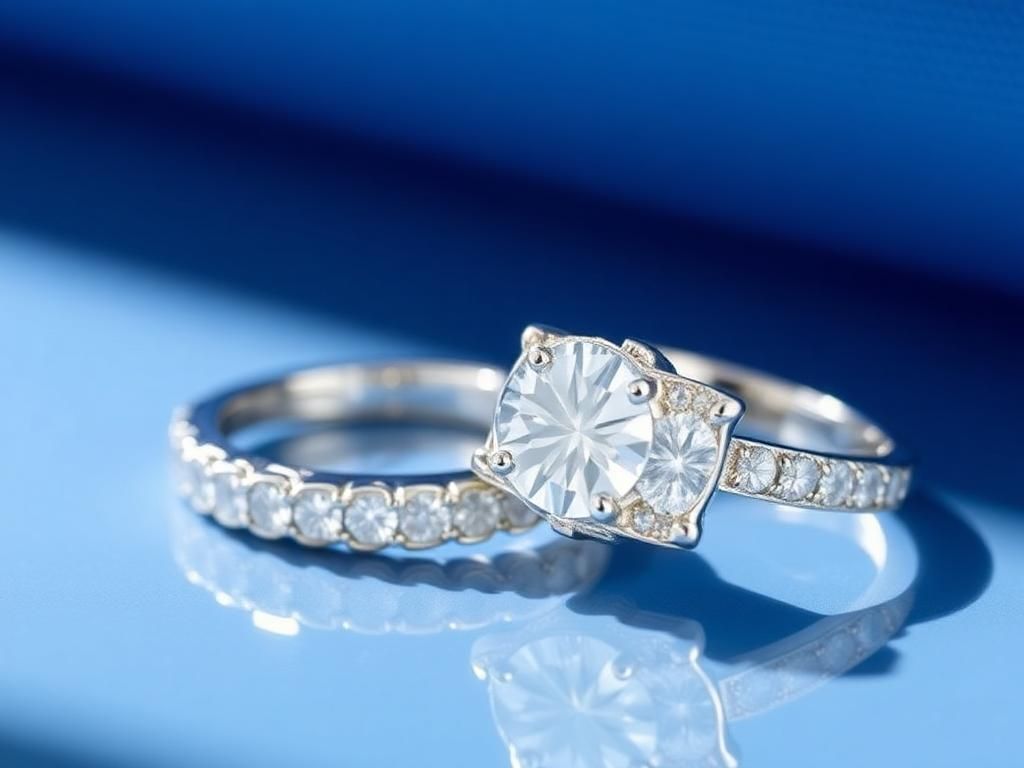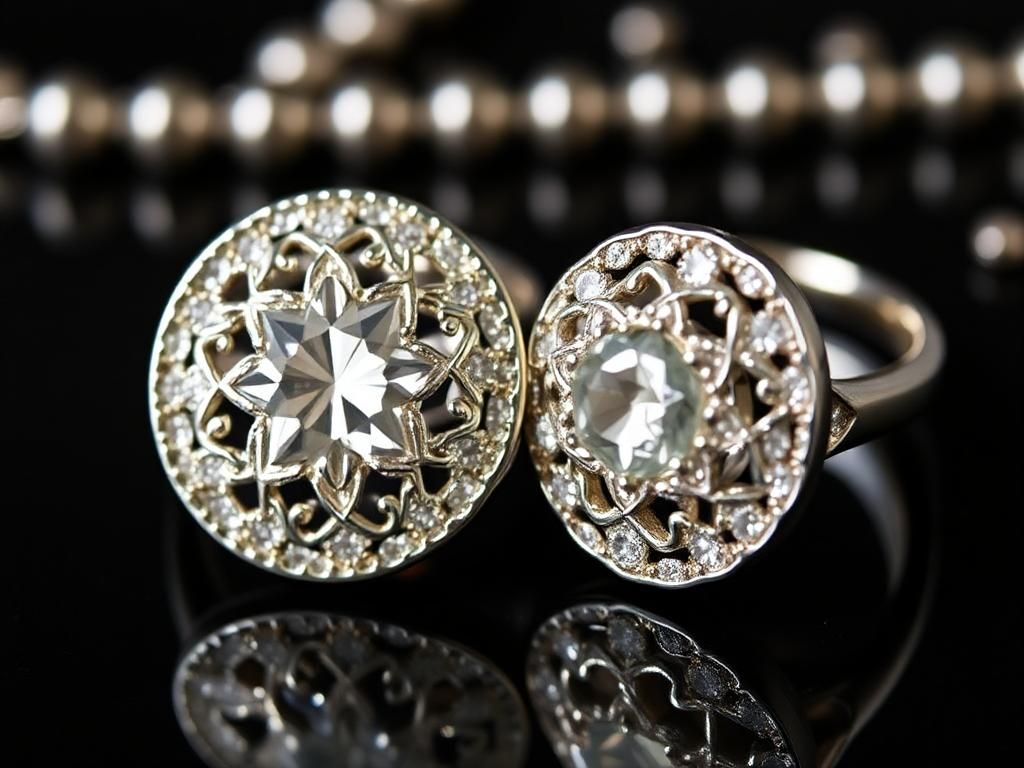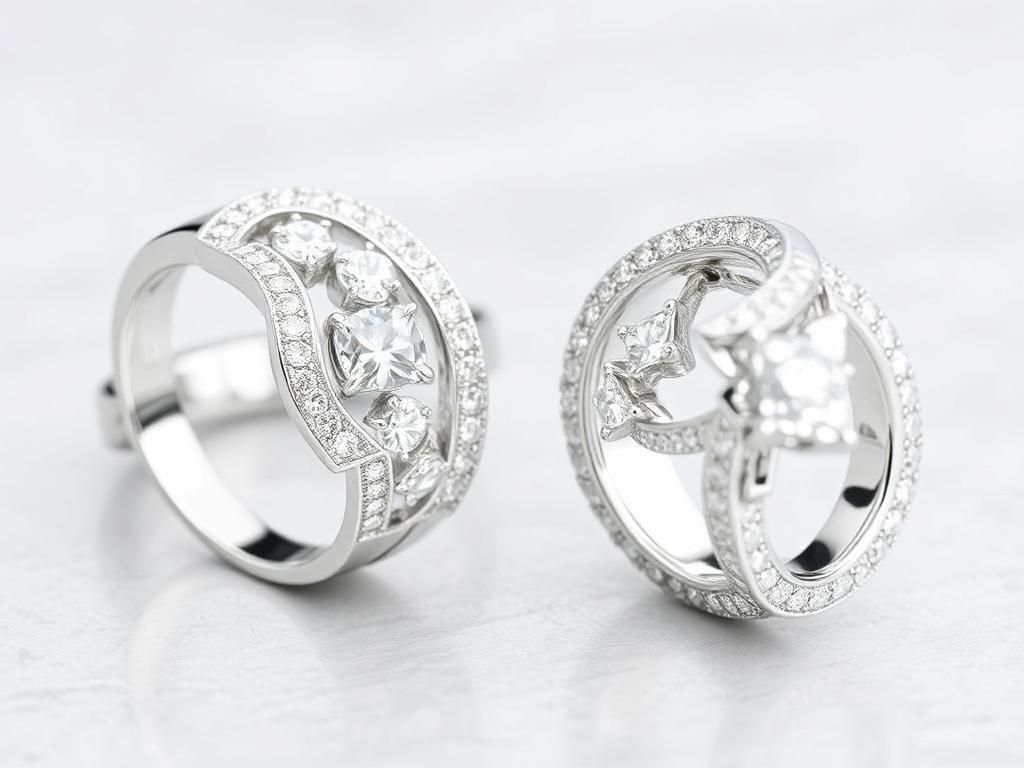The allure of silver vs white gold has captured the hearts of jewelry enthusiasts for centuries. Both metals are incredibly popular in the realm of jewelry, celebrated for their unique properties, aesthetics, and versatility. Choosing the right metal can significantly impact the overall look and feel of a piece, making it essential for anyone considering a jewelry purchase to understand the differences between these two options. This article aims to provide a comprehensive comparison of silver and white gold, covering everything from composition and properties to aesthetic appeal and maintenance.
Composition and Properties
Silver
When discussing silver, it’s essential to recognize that there are different types. The most common forms of silver used in jewelry are:
- Sterling silver: This is the most popular type, consisting of 92.5% silver and 7.5% other metals, usually copper. This alloying makes sterling silver more durable and suitable for jewelry.
- Fine silver: Composed of 99.9% pure silver, fine silver is less commonly used in jewelry due to its softness, making it more prone to scratching and bending.
One of the notable physical properties of silver is its softness and malleability. It means that silver can be easily shaped and crafted into intricate designs. Additionally, silver has a natural luster that gives it a warm, white sheen.
Tarnishing
Despite its beauty, sterling silver is prone to tarnishing, a chemical process that occurs when silver reacts with sulfur compounds in the air. This results in a blackish or dull surface that can diminish its appeal. Common causes of tarnishing include:
- Exposure to moisture or humidity
- Contact with perfumes, lotions, or cleaning products
- Time and oxidation in the air
To combat tarnishing, regular maintenance is key. Here are some cleaning strategies:
- Store jewelry in a cool, dry place in anti-tarnish pouches or boxes.
- Use a silver polishing cloth to restore shine.
- Soak in a mild soapy solution, rinse, and dry thoroughly.
White Gold
White gold is a loved choice for many due to its luxury appeal and hint of glamour. It is an alloy that typically includes 75% gold, alongside other metals like nickel, palladium, or silver to enhance its durability. The presence of these metals gives white gold its distinctive color, often resembling platinum.
Color and Finish
Many pieces of white gold jewelry are coated with a layer of rhodium plating to enhance their shine and offer additional protection against scratches and tarnishing. This finish not only provides a bright, mirror-like surface but also adds to the longevity of the piece.
Durability
White gold is generally more durable than silver, making it better suited for items such as engagement rings that are worn daily. However, this durability can vary depending on the alloy composition. Care tips include:
- Avoiding harsh chemicals and cleaners.
- Periodic checks for wear on the rhodium plating.
- Professional re-plating as needed to maintain its luster.
Aesthetic Comparison
Color and Appearance

The two metals differ significantly in color tone. Silver has a bright, shiny finish that’s reflective yet warm, while white gold leans more toward a cooler tone due to its alloy composition. When viewed in various lighting conditions, silver can brighten up while white gold maintains a sophisticated elegance. Ultimately, the choice between the two could depend on personal preference and the overall style of the jewelry piece.
Style and Versatility
Both metals can complement different skin tones, making them suitable for various types of jewelry. Silver often aligns with more casual and bohemian styles, while white gold tends to present a more elegant and classic appearance. Each metal can suit various occasions, from everyday wear to more formal events. For instance:
| Jewelry Type | Best Suited Metal |
|---|---|
| Engagement Rings | White Gold |
| Everyday Earrings | Silver |
| Fashion Bracelets | Both |
| Formal Necklaces | White Gold |
| Boho Accessories | Silver |
This table summarizes how each metal performs based on various types of jewelry, allowing customers to make informed choices about their accessories.
Cost Analysis
Pricing Differences
When it comes to the pricing differences between silver and white gold, the disparity is quite evident. On average, sterling silver is substantially less expensive than white gold. The average price for sterling silver is around $0.50 to $2.00 per gram, whereas white gold can range from $40 to $70 per gram depending on the karat (with 14K gold being one of the most common). Factors influencing these prices include:
- Market conditions and demand
- Skill and craftsmanship required to create the specific piece
Investment Value
In terms of investment value, silver is often viewed as a commodity and can be a smart investment, particularly during economic uncertainties. White gold is perceived more as a luxury item, with resale value that can vary based on the current market and designer brand. In some contexts, wedding bands or classic pieces in white gold might hold their value better over time than silver alternatives.
Hypoallergenic Considerations
Allergies and Sensitivities
For those considering hypoallergenic options, it’s crucial to note that some people may experience allergic reactions to certain metal alloys, particularly nickel, which is commonly used in white gold. If you are sensitive to nickel, look for alternatives like palladium white gold or opt for sterling silver, which is generally more hypoallergenic.
Care and Maintenance
Cleaning Methods
Taking good care of your jewelry enhances its beauty and longevity. For silver, regular cleaning helps prevent tarnish buildup. Simple methods include:
- Using a soft cloth dedicated to silver cleaning.
- Employing a mixture of baking soda and water for deeper tarnish removal.
In contrast, taking care of white gold requires careful attention to its plating:

- Using mild soap and water for regular cleaning, avoiding harsh chemicals.
- Professional re-rhodium plating every few years can restore its look.
Storage
Proper storage is also essential. Keep your silver jewelry in anti-tarnish pouches to prevent oxidation. Similarly, store white gold pieces separately to avoid scratches, ideally in a lined jewelry box.
Personal Preference and Lifestyle
Choosing Based on Lifestyle
When choosing between silver and white gold, consider your lifestyle and how often you plan to wear the items. Silver is ideal for casual, everyday wear, while white gold may be better suited for formal occasions or special pieces intended for limited use. Understanding your personal style is also crucial in making this decision.
Emotional and Cultural Factors
Personal and cultural significance also influences the choice between silver and white gold. Many cultures place a strong sentimental value on specific metals; for instance, in some traditions, silver is associated with purity, while white gold can symbolize luxury and commitment, especially in wedding bands.
Conclusion
In weighing silver vs white gold, there are numerous factors to consider, including composition, aesthetics, pricing, and personal style. Each metal has its unique characteristics, benefits, and drawbacks, ranging from their appearance and maintenance to their emotional value. Ultimately, the right choice is subjective and should reflect your individual preferences, lifestyle, and how you wish to express yourself through jewelry. Remember to consider your specific needs and how each metal aligns with your personal style when making your decision.
Call to Action
Have you had experiences with silver vs white gold? We’d love to hear your stories! Share your thoughts below or visit your local jeweler for more information on these stunning metals. You might also explore online jewelry collections for inspiration!
FAQ
1. Is silver more affordable than white gold?
Yes, sterling silver is generally less expensive than white gold, with price differences influenced by material content and craftsmanship.
2. Can silver tarnish, and how can I maintain it?
Yes, silver can tarnish, especially if exposed to moisture and certain chemicals. Regular cleaning and proper storage can help maintain its shine.
3. Are there hypoallergenic alternatives to white gold?
Yes, palladium white gold is a hypoallergenic option. Also, sterling silver is relatively hypoallergenic compared to nickel-based alloys.
4. How can I tell if I have a quality white gold piece?
Look for stamps indicating purity (like “14K” or “18K”) and ensure it has a proper rhodium plating for enhanced durability and shine.
5. What types of jewelry are most commonly made from silver?
Common types of silver jewelry include bracelets, earrings, necklaces, and anklets, suitable for casual to formal settings.
6. How often should I have my white gold jewelry re-plated?
It’s recommended to re-plate your white gold jewelry every 1-3 years, depending on wear and exposure to harsh substances.
7. Can I wear silver and white gold together?
Absolutely! Mixing metals can create a unique and personalized style. Just ensure that the metals complement each other aesthetically.
8. What are the best methods for cleaning white gold?
The best method is a gentle wash with mild soap and water, followed by a soft cloth. Avoid harsh cleaners to prevent damage to the rhodium coating.
9. Is it common to find tarnish-free silver jewelry?
While it’s challenging to find completely tarnish-free silver, some pieces are treated to reduce tarnishing and maintain their luster.
10. What influences the investment value of silver and white gold?
Silver’s value is often linked to market demand and economic conditions, while white gold’s investment worth can relate to brand authenticity and craftsmanship.


